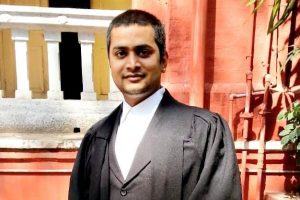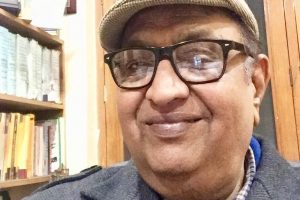Custodial Violence-A Barrier On A Democratic System
India as a long-standing democratic country in the world which sets an example to the world, provides for certain rights enshrined by the Constitution of India. But the custodial violence a longstanding phenomenon has become a barrier and a limitation to the fundamental rights provided by the Constitution of India. Custodial violence is the worst of the civil society as well as for democratic country. The Custodial violence is the major obstacle of human rights violation. The practice of custodial violence is present not only in India but in other countries of the world. The custodial violence has become an issue of an hour. The treatment of accused in the police custody, the psychological and physical violence by police has led to violation of the rights of accused. The torture means the ill-treatment, physically beating to the accused unnecessarily without any cause.[1*] It has been estimated that during 1995 at least 100 people died due to custodial torture in the police custody due to lack of medical care given to the accused. Whereas in 2019, 1731 people died in Police and Judicial Custody due to custodial torture by the police officers. Many of the above people are from the vulnerable sections of society. In the same year, one under trial prisoner in Tihar jail complaint that police personnel burn the symbol “OM” on his back which led him severe pain and no medical aid was given to him for 2 days.
[1* Roy Sudipto, Brutality in Police Custody in India, available at-www.heinonline.org, https://home.heinonline.org/, last assessed-12/1/2021.]
Moreover, a pregnant woman complaint of miscarriage by police personnel when she accused of kidnapping and taken to police custody, there policeman kicked in her belly. It has also been estimated that some of the deaths due to custodial torture by police are unreported and if reported they are wrongly said in report that accused die due to other reason than custodial torture. Custodial deaths of accused in the custody of police cannot be viewed in the isolation. When the law enforcement agencies like police officers became the culprits of violence and causes death of accused persons, leads to the abuse of their authority and they are backed by the silent state.
The word torture was first defined in the year 1884 which means torture or third degree by the way of physical beating, harassment, cruelty by the police officers in the custody. The human rights commission explained the torture in police custody is tying of accused with rope his hands and legs to suspend the circulation of his body and then beating with hot iron rod. Sometimes the police officers put red chilly powder in the eyes of accused or under trail and making him to feel suffocation etc. Some of the accused did not bear this type of third-degree torture, hence they die in the police custody.
In State of Uttar Pradesh v. Ram Sagar Yadav, AIR 1985 Page 374, in this case Supreme Court of India for first time recognised and amended section-302 of the Indian Penal Code, and include that under this section the custodial torture and violence should be included when the accused dies of torture by police in custody. The Hon’ble Bench of Supreme Court also said that if the court will not came to rescue the accused from custodial torture inflicted by police then people will start losing their faith in the law enforcement agencies as well as the Judiciary.
India Still Drafting an Act to Control Custodial Violence.
The International Conventions of United Nations are also against the Custodial Torture as the Custodial Torture is not only confined or performed in the India but also occurred in different countries of the world. On this International Convention on Torture was passed by the United Nations at the world level to resolve the issue of torture in the custody at the International level. They also recommended the signatories of the Untied Nations as well as the signatories of the International Convention against torture to make the new laws at the domestic level against the custodial torture in the police custody and to punish the police officers who inflicts the torture on the accused persons. India is also the signatory of the International Convention against torture. On the lines of International Convention against Torture, India also came up with a Bill i.e. Anti-Torture Bill, 2010, put before the Lok Sabha on April 26,2010 and passed by the Lok Sabha. When this bill is presented before Rajya Sabha, it was forwarded to the select committee for reforms in bill. Actually speaking, this bill was never passed in Rajya Sabha and this bill was lapsed in 2014 with the dissolution of Lok Sabha and Change of Government from U.P.A to N.D.A. In 2016, the Home Ministry in Parliament said that they are working on this bill to come up as an act and referred same to the Law Ministry to prepare the draft bill again.[2*]
[2* Bhavni Sahai, Custodial Violence is the Barrier to Democratic System, available at-www.intolegalworld.com, https://www.intolegalworld.com/, last assessed-13/1/2021.]
In November 2017, the Law Commission of India recommended for preparing of New Draft bill of Protection of Accused from Torture and they also recommended certain amendments in the Anti-Torture Bill, 2010 and change of certain definitions and enhancing more and more punishments for torture by police personnel in the custody. But this draft is still on the papers and have not evolved out as an act. Apart from the law of Anti-Torture or Protection of Accused from Torture, 2017 bill, the Judiciary comes to provide the relief to the accused persons who faced torture in the police custody and punishing the police personnel involved in the torture.
Judiciary came to Rescue Accused Persons who faced Custodial Torture
Till the Parliament of India drafts an act on ending Custodial Violence, The Supreme Court in its landmark judgements gave detail guidelines to control the custodial violence. Some of the Important Judgements are,
In DK Basu v. State of West Bengal, AIR 1997 SC 610, this judgement is one of the landmark judgements which provides the Supreme Court of India to deal with the custodial violence. In this landmark judgement Supreme Court of India also started Public Interest Litigation for first time. Justice DK Basu, then Chairman of West Bengal Legal Services Authority and also a senior advocate addressed a letter to then Chief Justice of India P.N. Bhagwati calling upon the news published in the newspaper on custodial deaths and violence in police custody, this letter was later treated as a writ petition by CJI P.N. Bhagwati. In this case for first time in the history the concept of Public Interest Litigation came into being. The main issues involved in this case was rising of custodial deaths and torture in the police custody, arbitrary arrest by police, need of guidelines to come up for ending custodial violence in the country.
Supreme Court of India in 1996 decided this landmark case and issued 11 guidelines which are to be followed in all cases of arrest and detention of accused and these are:
1. The details of police personnel who performs interrogation of accused should be recorded in register.
2. The police officer while making arrest of accused should record time of arrest of accused and the said is to be signed by one family member of accused.
3. The police should inform the family member or nearest friend regarding the arrest of accused.
4. The arrested person should be aware of his rights.
5. The entry must be made in the case diary of police station regarding the arrest of accused.
6. The medical examination of arrested person should be made at the time of arrest.
7. The arrested person must go for medical examination for every 48 hours.
8. The copies of documents like arrest, memo etc are to be sent to the nearest Magistrate.
9. The arrested person must be allowed to meet his lawyer in the custody.
10. The arresting officer must communicate the arrest of accused person to a police control room of state and district with 12 hours of his arrest.
11. The police must notify the arrested person the place, date, time of arrest of accused to his family members or his nearest friend.
After the landmark judgement of this case many new cases filed in the Hon’ble High Courts and Supreme Court of India where the decision of D.K. Basu has been cited in every above case in High Courts and Supreme Court of India.
In Parkash Singh v. Union of India, AIR 1996 SC 310, this is also a landmark judgement of Supreme Court in which petitioner states that the police officers perform their duty in political manner and perform very rude attitude in the police custody where accused persons are lodged. Supreme Court of India in this case laid down that there is need of police reforms to control the rude attitude of police and there should be setting up of Police Complaints Authority in every state of India, which will take into consideration of police complaints of misconduct.
In D.r Uprendra Baxi v. State of Uttar Pradesh, AIR 1987 SC 191, in this case Supreme Court of India said that a serious attention is needed to end the custodial violence meted with accused girls and women in the police custody. The court further held that the way the girls and women are treated in very autocratic and brute manner in police custody calls for no mercy on the police personnel who performs this kind of custodial torture on them.
In Rudal Shah v. State of Bihar, AIR 983 SC 1086, the Supreme Court of India in this case granted monetary compensation to accused (petitioner) who was in jail for 14 years without any charge and he experienced custodial violence at that time when he was in jail during that period of time.
In 2015 Supreme Court in DK Basu v. State of West Bengal, (2015) 8 SCC 744 case, Supreme Court of India gave its revised guidelines on the basis of its landmark judgement of 1996 and held for setting up of State Human Rights Commission and filling up of vacancies in them. It also held that setting up of CCTVs cameras in all prisons within 1year, non-official visitors, the Judicial Magistrates should do surprise checks in prisons and Police stations.
Recently, Bombay High Court in 2020 in Ashok Kondaji Rokade v. State of Maharashtra, Criminal Writ Petition No.1548 of 2016, awarded Rs. 5 lakh compensation to the family of an allegedly juvenile victim of custodial death who was arrested on suspicion of pickpocketing at Shirdi temple. The two-judge bench of Justices TV Nalawade and Shrikant D. Kulkarni, while leaving the criminal trial to the trial court, concluded that the factual scenario determined that it was a case of custodial death and hence compensation was justified. The court also called out the erring police officials for not following the law and the guidelines laid down in the DK Basu v. State of West Bengal case during or at the time of arrest.
In June, 2020 Madras High Court took Sou-Motto cognizance in Registrar Judicial v. State of Tamil Nadu, 2020 SCC Online Mad 1249, in this case police took Jayaraj and his son Bennix into custody on June 19 for interrogation, as they had kept their mobile accessories shop open during the coronavirus-induced lockdown. A case was filed against them for not following the curfew under lockdown, and they were sent to custody. On June 22, Bennix complained of breathing problems and was admitted to a local government-run hospital. He died around 9 pm. Jayaraj, who was also hospitalised due to an illness, died the next day. Their family accused the police of assaulting them in custody. On June, 24th 2020, Madras High Court took sou-motto cognizance and permitted state government to conduct CBI Investigation of above alleged case of custodial death.
In 2020 Supreme Court of India gave directions to control custodial violence in Paramvir Singh Saini v. Baljit Singh and Ors., SLP Criminal No.3543 of 2020, the 3-Judge Bench, directed the Government to install CCTV cameras and recording equipment to Control Custodial Violence in the offices of Central Bureau of Investigation (CBI), National Investigating Agency (NIA), Enforcement Directorate (ED), Narcotics Control Bureau (NCB), and in any other agency which carries out interrogation and has power of arrest. The Supreme Court also held for the constitution of Oversight Committees at the State as well as at District level for ongoing installation and maintenance of CCTVs in Police Stations across all UTs and States while it directed Finance Departments of all UTs and States to allocate fund for it. All the parts of Police Stations should be covered under CCTV facility audio as well as visual taping and Station House Officer should be responsible for working conditions of CCTV cameras.
In order to control Custodial violence on the accused the National Human Rights Commission along with the Police Reforms Commission has set up an agenda point programme to strengthen the faith in people for law enforcement agencies. The commission also recommended the law commission of India for making procedures to held guilty the police personnel involved in custodial torture. The National Human Rights Commission organized many workshops in different states of India where the violation of accused in the police custody is rampant. In the workshops they talked about, humane treatment while treating the accused in the police custody. They also recommended for creating the separate subject on humane treatment of accused in custody which should be implemented when they trained new Police officers on different laws. In the End the most important Suggestion and Recommendation for Controlling the Custodial Deaths and Violence is that there should be proper Implementation of DK Basu v. State of West Bengal, 1996 and 2015 Judgement and its Guidelines.
© Chawla Publications (P) Ltd.































